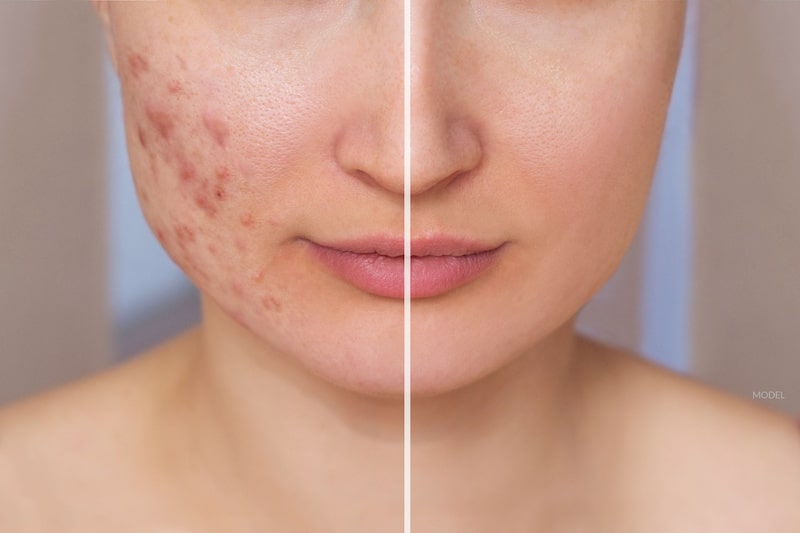Acne scars can linger long after breakouts fade, leaving behind textural irregularities and uneven skin tone. One treatment gaining attention in the skincare world is Platelet-Rich Plasma (PRP) therapy. So, is PRP therapy effective for acne scars? The answer is yes—PRP therapy can be effective, especially when combined with Acne Scar Treatment(علاج ندبات حب الشباب) like microneedling. This natural approach uses your body’s own healing factors to stimulate collagen, repair damaged tissue, and improve skin texture. While not a miracle cure, it offers promising results for those looking for a minimally invasive solution.
Importance of Treating Acne Scars with Regenerative Approaches:
Acne scars, particularly rolling and boxcar types, are caused by collagen damage beneath the skin’s surface. PRP therapy is designed to address these issues by leveraging your own platelets, which are rich in growth factors that encourage cellular repair. Treating acne scars early and effectively helps:
Prevent deepening of scar tissue over time
Stimulate new collagen and elastin production for smoother skin
Enhance skin tone and texture by promoting overall rejuvenation
Support natural healing without relying on synthetic substances
By using your body’s healing power, PRP delivers a gentle yet powerful response to skin damage.
How PRP Therapy Works for Acne Scarring?
PRP therapy involves drawing a small amount of your blood, processing it to isolate the platelet-rich plasma, and injecting or applying it to the affected skin. It’s often paired with microneedling to enhance absorption and effect. PRP works by:
Delivering concentrated growth factors directly into the scarred tissue
Activating fibroblasts that help rebuild skin structure
Encouraging angiogenesis, or the formation of new blood vessels, to improve skin tone
Speeding up tissue regeneration for quicker healing and better results
The gradual improvements seen from PRP are due to your skin naturally rebuilding itself from the inside out.
Risks and Considerations of PRP for Acne Scars:
Although PRP is generally considered safe, especially since it uses your own blood, there are still some potential risks and considerations:
Mild redness or swelling is common after the procedure
Bruising at injection sites may occur but typically fades quickly
Temporary dryness or flaking as the skin begins its healing process
Not suitable for active acne, as inflammation may interfere with the treatment’s effectiveness
Results vary depending on scar severity, skin type, and overall health
PRP is well-tolerated by most people and carries a lower risk of allergic reaction compared to synthetic treatments.
Benefits of PRP for Acne Scar Treatment:
PRP therapy offers a range of advantages, especially when combined with microneedling or laser treatments. Some key benefits include:
Natural and biocompatible, since it’s derived from your own blood
Stimulates long-term skin improvement with minimal downtime
Reduces the appearance of pitted scars, fine lines, and dullness
Improves overall skin tone, elasticity, and hydration
Can be safely repeated, with many people opting for multiple sessions for enhanced results
These benefits make PRP a great option for individuals seeking a holistic and minimally invasive approach to scar revision.
Frequently Asked Questions:
How many PRP sessions are needed for acne scars?
Typically, 3 to 4 sessions spaced 4–6 weeks apart yield the best results, though some may notice improvement after the first or second treatment.
Does PRP hurt?
Mild discomfort is expected during and after treatment, but numbing cream is usually applied beforehand to reduce any pain.
When will I see results?
Visible changes often begin around 3–4 weeks post-treatment, with continued improvement over several months as collagen builds.
Is PRP safe for all skin types?
Yes. Because it’s a natural treatment, PRP is generally safe for all skin tones and types, with a low risk of pigmentation issues.
Can PRP be combined with other treatments?
Absolutely. PRP works well with microneedling, fractional lasers, and even chemical peels to boost overall results.
Conclusion:
So, is PRP therapy effective for acne scars? Yes—especially when it’s part of a well-rounded treatment plan. By using your body’s natural healing mechanisms, PRP helps rejuvenate damaged skin, reduce the appearance of scars, and restore a smoother complexion. Though results take time and consistency, the regenerative benefits are worth the patience. Whether used alone or alongside other treatments, PRP offers a safe and effective pathway to clearer, more confident skin.


 :
: